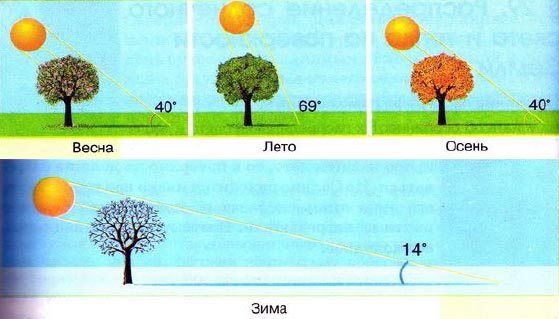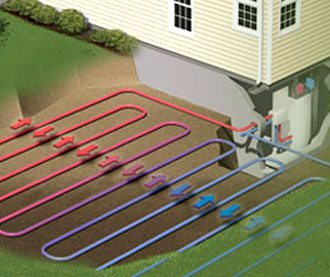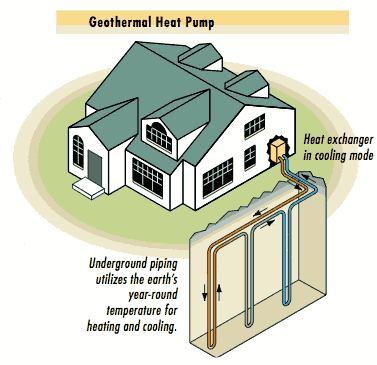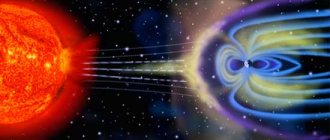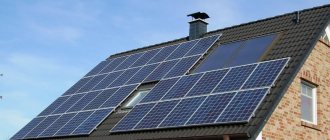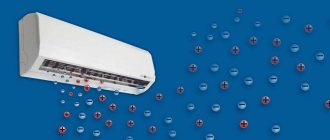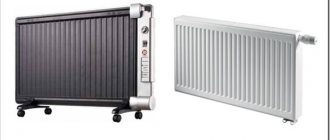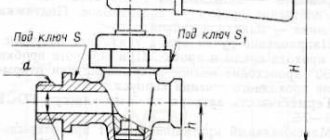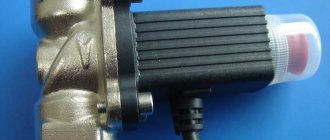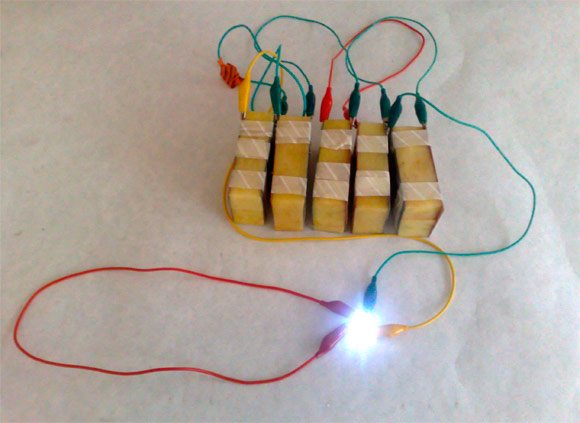
In order to get electricity, you need to find a potential difference and a conductor People have always tried to save money, and in the era of constantly growing utility bills, this is not at all surprising. Today, there are already ways by which a person can get free electricity free for him. As a rule, these are certain do-it-yourself installations, which are based on an electric generator.
Thermoelectric generator and its device
A thermoelectric generator is a device that generates electrical energy from heat. It is an excellent steam source of electricity, albeit with low efficiency.
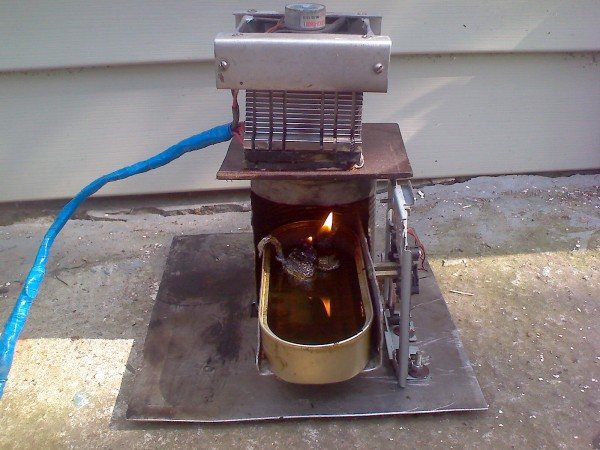

As a device for the direct conversion of heat into electrical energy, thermoelectric generators are used, which use the principle of operation of conventional thermocouples
Essentially, thermoelectricity is the direct conversion of heat to electricity in liquid or solid conductors, and then the reverse process of heating and cooling the contact of various conductors using an electric current.
Heat generator device:
- A heat generator has two semiconductors, each of which consists of a certain number of electrons;
- They are also interconnected by a conductor, above which there is a layer capable of conducting heat;
- A thermionic conductor is also attached to it for transferring contacts;
- Next comes the cooling layer, followed by the semiconductor, whose contacts lead to the conductor.
Unfortunately, a heat and power generator is not always able to work with high capacities, therefore it is used mainly in everyday life, and not in production.
Today the thermoelectric converter is almost never used anywhere. It "asks" for a lot of resources, it also takes up space, but the voltage and current that it can generate and convert are very small, which is extremely unprofitable.
Russian scientists get useful heat from the cold
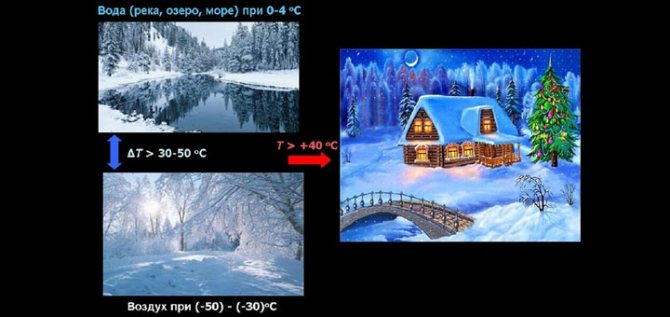

The principle of operation of "TepHol". Illustration by Yuri Aristov.
Scientists from the Institute of Catalysis of the SB RAS have figured out how to get heat from the cold, which can be used for heating in harsh climatic conditions. To do this, they propose to absorb methanol vapors by a porous material at low temperatures. The first results of the study were published in the journal Applied Thermal Engineering.
Chemists have proposed a cycle called "Heat from Cold" ("TepHol"). Scientists convert heat using the process of adsorption of methanol into a porous material. Adsorption is the process of absorption of substances from a solution or gas mixture by another substance (adsorbent), which is used to separate and purify substances. The absorbed substance is called an adsorbate.
“The idea was to first theoretically predict what the optimal adsorbent should be, and then to synthesize a real material with properties close to ideal,” commented one of the authors of the study, Doctor of Chemistry Yuri Aristov. - The working substance is methanol vapors and is usually adsorbed using activated carbons. We first took commercially available activated carbons and used them. It turned out that most of them “do not work” very well, so we decided to synthesize new methanol adsorbents, specialized for the TepHol cycle, ourselves. These are two-component materials: they have a porous matrix, a relatively inert component and an active component - a salt that absorbs methanol well ”.
Next, the researchers conducted a thermodynamic analysis of the TepHol cycle, which gives an approximate idea of the transformation process, and determined the optimal conditions for the implementation of adsorption. Scientists were faced with the task of finding out if the new thermodynamic cycle can provide sufficient efficiency and power for generating heat. To answer this question, a laboratory prototype of the TepHol installation was designed with one adsorber, an evaporator and cryostats that simulated cold air and non-freezing water.
The adsorbent was placed in a special large surface heat exchanger made of aluminum. This installation makes it possible to produce heat in an intermittent mode: it is released when the adsorbent absorbs methanol, and then it takes time to regenerate the latter. For this, the methanol pressure over the adsorbent is reduced, which is facilitated by the low ambient temperature. Tests of the TepHol prototype were carried out in laboratory conditions, where the temperature conditions of the Siberian winter were simulated, and the experiment was completed successfully.
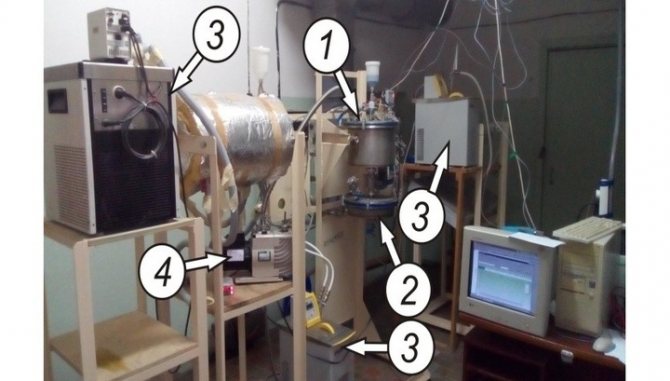

The first prototype of the TepHol device: 1 - adsorber, 2 - evaporator / condenser, 3 - thermocryostats, 4 - vacuum pump.
“By using two natural thermostats (heat reservoirs) in winter, for example, ambient air and non-freezing water from a river, lake, sea or groundwater, with a temperature difference of 30-60 ° C, it is possible to obtain heat for heating homes. Moreover, the colder it is outside, the easier it is to get useful heat, ”said Yuri Aristov.
To date, scientists have synthesized four new sorbents that are in the testing phase. According to the authors, the first results of these tests are very encouraging.
“The proposed method allows you to get heat directly on site in regions with cold winters (northeastern Russia, northern Europe, the United States and Canada, as well as the Arctic), which can help accelerate their socio-economic development. The use of even a small amount of low-temperature heat of the environment can lead to a change in the structure of modern energy, reduce the dependence of society on fossil fuels and improve the ecology of our planet, ”concluded Aristov.
In the future, the development of Russian scientists may be useful for the rational use of low-temperature thermal waste from industry (for example, cooling water discharged by thermal power plants, and gases that are a by-product of chemical and oil refining industries), transport and housing and communal services, as well as renewable thermal energy, especially in regions of the Earth with harsh climatic conditions.
https://www.vesti.ru
Solar thermal generator of electricity and radio waves
Sources of electrical energy can be very different. Today, the production of solar thermoelectric generators has begun to gain popularity. Such installations can be used in lighthouses, in space, cars, as well as in other areas of life.
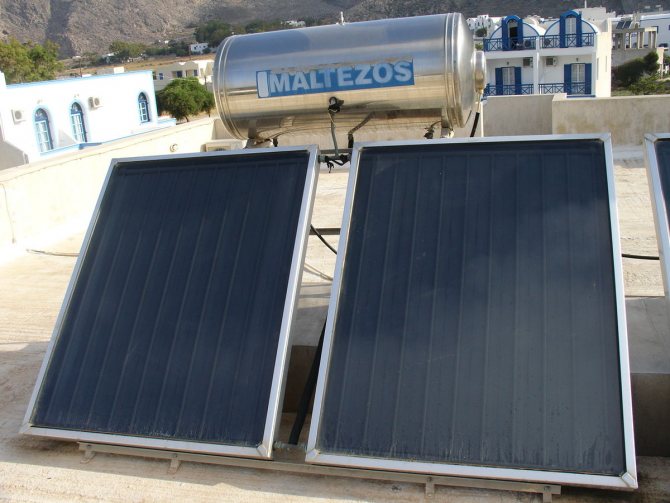

Solar thermal generators are a great way to save energy
RTG (stands for radionuclide thermoelectric generator) works by converting isotope energy into electrical energy. This is a very economical way to get almost free electricity and the possibility of lighting in the absence of electricity.
Features of the RTG:
- It is easier to obtain an energy source from isotope decays than, for example, to do the same by heating a burner or a kerosene lamp;
- The production of electricity and the decay of particles is possible in the presence of special isotopes, because the process of their decay can last for decades.
Using such an installation, you need to understand that when working with old models of equipment there is a risk of receiving a dose of radiation, and it is very difficult to dispose of such a device. If not properly destroyed, it can act as a radiation bomb.
Choosing the manufacturer of the installation, it is better to stay at the firms that have already proven themselves. Such as Global, Altec (Altec), TGM (Tgm), Cryotherm, Termiona.
By the way, another good way to get electricity for free is a generator for collecting radio waves. It consists of pairs of film and electrolytic capacitors, as well as low-power diodes. An insulated cable about 10-20 meters is taken as an antenna and another ground wire is attached to a water or gas pipe.
Lesson 24. How atmospheric air heats up (§ 24) p. 61
We will answer the following questions.
1. How much of the sun's heat and light reaches the earth's surface?
On the way of solar energy to the surface of the Earth is the atmosphere. It absorbs some of the energy, transfers some to the earth's surface, and reflects some back into space. The atmosphere absorbs about 17% of the energy, reflects about 31%, and passes the remaining 49% to the Earth's surface.
2. Why does not the entire flow of solar energy reach the earth's surface?
The sources of energy for all processes occurring on the surface of the Earth are the Sun and the bowels of our planet. The sun is the main source. One two-billionth of the energy emitted by the Sun reaches the upper boundary of the atmosphere. However, even such a small fraction of solar energy does not fully reach the Earth's surface.
Part of the sun's rays is absorbed, scattered in the troposphere and reflected back into outer space, and part of it reaches the Earth and is absorbed by it. spent on heating it.
Heating of atmospheric air. The temperature of the lower layers of atmospheric air depends on the temperature of the surface over which it is located. The sun's rays, passing through transparent air, almost do not heat it, on the contrary, through the clouds and the content of impurities, it dissipates, losing part of the energy. But, as we have already noted, the earth's surface heats up, and the air is already warming up from it.
3. What is called the underlying surface?
The underlying surface is the surface of the earth that interacts with the atmosphere, exchanges heat and moisture with it.
4. What conditions does the heating of the underlying surface depend on?
The amount of solar heat and light entering the earth's surface depends on the angle of incidence of the sun's rays. The higher the sun is above the horizon, the higher the angle of incidence of the sun's rays, the more solar energy is received by the underlying surface.
5. What heats the ambient air?
The sun's rays, passing through the atmosphere, heat it little. The atmosphere is heated from the surface of the Earth, which, absorbing solar energy, converts it into heat. Particles of air, in contact with a heated surface, receive heat and carry it into the atmosphere. This is how the lower atmosphere heats up. Obviously, the more solar radiation the Earth's surface receives, the more it heats up, the more the air heats up from it.
6. Why does the air temperature mainly decrease with altitude?
The atmosphere is heated mainly by the energy absorbed by the surface. Therefore, the air temperature decreases with altitude.
7. How does the air temperature change during the day?
The air temperature always changes throughout the day. It depends on the amount of solar heat that enters the Earth. The highest temperatures during the day are always at noon, because the Sun rises to its highest altitude during this time. It means that it heats a large area. Then it begins to decrease and the temperature also decreases.For 24 hours, the lowest temperature is observed closer to the morning (at 3-4 o'clock in the morning). After sunrise, the temperature starts to rise back.
8. What time of day is the maximum and minimum air temperature observed?
The minimum air temperature will be in the predawn hours. This is because the sun was below the horizon all night long and the air cooled down. The maximum air temperature is usually observed around noon, when the sun reaches its zenith and the angle of incidence of the sun's rays is maximum. At this time of day, the maximum daytime temperature is noted, which, as a rule, begins to decline in the afternoon. And after sunset, the sun completely ceases to warm the earth and the air temperature begins to tend to its minimum mark.
We will investigate the heating conditions of the underlying surface and learn how to explain the changes in air temperature during the day.
1. Sun rays in the atmosphere
In the figure, write the values of the fractions (in%) of solar energy absorbed by the Earth and reflected by it into outer space.
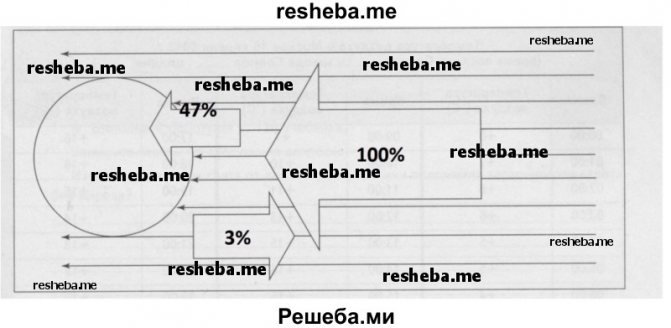

2. Subsurface
Fill in the missing words.
The earth's surface, which interacts with the atmosphere, participating in the exchange of heat and moisture, is called the underlying surface.
Fill in the missing words.
The amount of solar heat and light entering the earth's surface depends on the angle of incidence of the sun's rays. The higher the sun is above the horizon, the greater the angle of incidence of the sun's rays, the more solar energy is received by the underlying surface.
Indicate how much of the sun's energy is absorbed by different types of underlying surface.
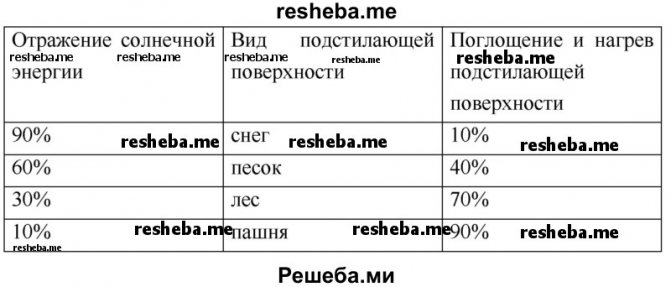

3. Change in air temperature during the day.
Based on the data of observations of the weather in Moscow on April 16, 2013 (see table), analyze the change in air temperature during the day.
Find out the time of sunrise and sunset, the maximum height of the Sun above the horizon on the Internet at https://voshod-solnca.ru/.
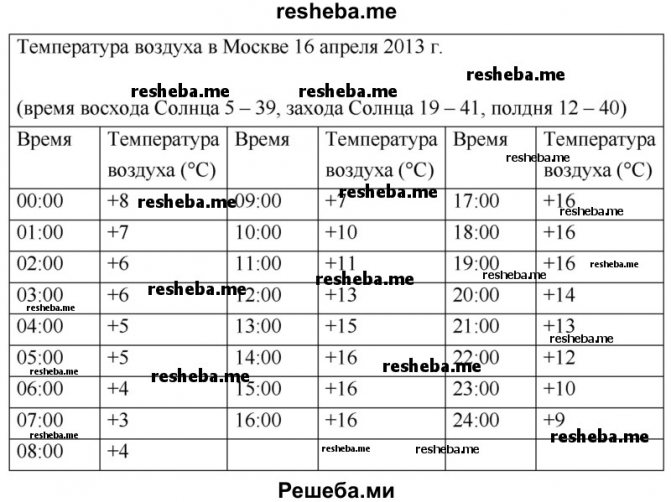

At night, the air temperature dropped from + 14 ° С (at 20:00), reaching its minimum value of + 5 ° С (at 5:00). During this time, the underlying surface was not illuminated by the Sun, therefore it cooled, the surface air layer also cooled.
Sunrise occurred at 5 hours 39 minutes.
Within 4 hours after sunrise, the underlying surface was slightly heated, since the angle of incidence of the sun's rays was small at that time.
As the Sun rises above the horizon, the angle of incidence of the sun's rays increases, the underlying surface heats up more and more, giving up its heat to the lower air layer. The rise in air temperature was noted between 9 and 14 o'clock, i.e. 3 hours after sunrise.
The highest height of the Sun was observed at true noon (12 hours 40 minutes).
In the afternoon, the underlying surface continued to warm up, so the air temperature continued to rise from + 13 ° С (at 12:00) to + 16 ° С (at 14:00).
The sun was declining, the underlying surface received less and less heat, and its temperature began to decrease. Now the air gave its warmth to the underlying surface. From 20 o'clock the air temperature began to decrease from the maximum value of + 16 ° С (at 19 o'clock) to midnight. In the night hours of the next day, the air temperature continued to drop.
Thus, the daily variation of the air temperature in Moscow on April 16, 2013 is characterized by a nighttime decrease to a minimum value of + 3 ° С (at 7:00) and a daytime increase to a maximum value of + 16 ° С (at 14:00). + 16 ° С - + 3 ° С = 13 ° С.
Pathfinder School
Do the work on p. 126 textbooks.
Write down the answers to the following questions.
Has the light output from the lamp changed when the position of the cardboard square without a cutout is changed?
It is necessary to visually conduct the experiment and write it down sequentially according to the textbook.(individually)
How did the area of the illuminated part change with a successive increase in the angle of incidence of the rays on the surface of a cardboard square without a cutout?
It is necessary to visually conduct the experiment and write it down consistently according to the textbook. (individually)
Has the amount of light changed per unit area of the illuminated part (for example, by 1 cm)?
It is necessary to visually conduct the experiment and write it down consistently according to the textbook. (individually)
How to make a Peltier element with your own hands
A common Peltier element is a plate assembled from parts of various metals with connectors for connecting to a network. Such a plate passes a current through itself, heating up on one side (for example, up to 380 degrees) and working from the cold on the other.
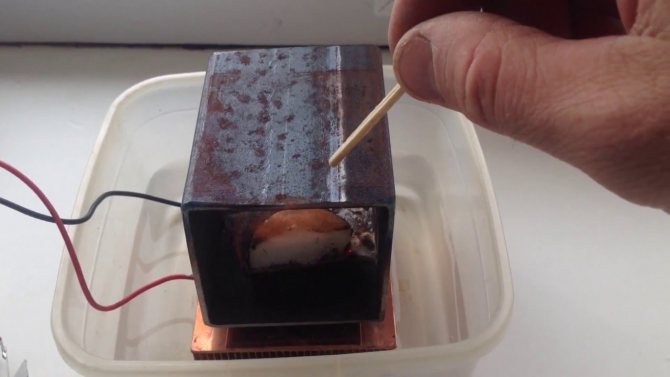

The Peltier element is a special thermoelectric transducer that works according to the principle of the same name for supplying electric current.
Such a thermogenerator has the opposite principle:
- One side can be heated by burning fuel (for example, a fire on a wood or some other raw material);
- The other side, on the contrary, is cooled by a liquid or air heat exchanger;
- Thus, current is generated on the wires, which can be used according to your needs.
True, the device's performance is not very great, and the effect is not impressive, but, nevertheless, such a simple home-made module may well charge the phone or connect an LED flashlight.
This generator element has its advantages:
- Silent work;
- The ability to use what is at hand;
- Light weight and portability.
Such homemade stoves began to gain popularity among those who like to spend the night in the woods by the fire, using the gifts of the land and who are not averse to getting electricity for free.
The Peltier module is also used to cool computer boards: the element is connected to the board and as soon as the temperature becomes higher than the allowable temperature, it begins to cool the circuits. On the one hand, a cold air space enters the device, on the other, a hot one. The 50X50X4mm (270w) model is popular. You can buy such a device in a store or make it yourself.
By the way, connecting a stabilizer to such an element will allow you to get an excellent charger for household appliances at the output, and not just a thermal module.
To make a Peltier element at home, you need to take:
- Bimetal conductors (about 12 pieces or more);
- Two ceramic plates;
- Cables;
- Soldering iron.
The manufacturing scheme is as follows: the conductors are soldered and placed between the plates, after which they are tightly fixed. In this case, you need to remember about the wires, which will then be attached to the current converter.
The scope of use of such an element is very diverse. Since one of its sides tends to cool, with the help of this device you can make a traveling small refrigerator, or, for example, an auto-air conditioner.
But, like any device, this thermoelement has its pros and cons. The pluses include:
- Compact size;
- The ability to work with cooling or heating elements together or each separately;
- Quiet, virtually silent operation.
Minuses:
- The need to control the temperature difference;
- High energy consumption;
- Low level of efficiency at high cost.
Distribution of sunlight and heat on the surface of the Earth
| Fig. 88. Changes in the height of the Sun and the length of the shadow throughout the year |
How the Sun's height above the horizon changes throughout the year. To find out, remember the results of your observations of the length of the shadow that the gnomon (1 m long pole) casts at noon. In September, the shadow was the same length, in October it became longer, in November - even longer, in the 20th of December - the longest. From the end of December, the shadow decreases again. The change in the length of the gnomon's shadow shows that throughout the year the Sun at noon is at different heights above the horizon (Fig. 88).The higher the sun is above the horizon, the shorter the shadow. The lower the Sun is above the horizon, the longer the shadow. The Sun rises highest in the Northern Hemisphere on June 22 (on the day of the summer solstice), and its lowest position is on December 22 (on the day of the winter solstice).
| Fig. 89. Dependence of illumination and surface heating on the angle of incidence of sunlight |
|
| Fig. 90. Changing the angle of incidence of sun rays by seasons |
Why does surface heating depend on the height of the sun? Fig. 89 it can be seen that the same amount of light and heat coming from the Sun, at its high position, falls on a smaller area, and at a low position, on a larger one. Which area will get hotter? Of course, the smaller one, since the rays are concentrated there.
Consequently, the higher the Sun is above the horizon, the more rectilinear its rays fall, the more the earth's surface heats up, and from it the air. Then summer comes (Fig. 90). The lower the Sun is above the horizon, the smaller the angle of incidence of the rays, and the less the surface heats up. Winter is coming.
The greater the angle of incidence of the sun's rays on the earth's surface, the more it is illuminated and heated.
How the Earth's surface heats up. On the surface of the spherical Earth, the sun's rays fall at different angles. The greatest angle of incidence of rays at the equator. It decreases towards the poles (Fig. 91).
| Fig. 91. Changing the angle of incidence of sun rays in the direction from the equator to the poles |
At the greatest angle, almost vertical, the sun's rays fall on the equator. The earth's surface there receives the most solar heat, so the equator is hot all year round and there is no change of seasons.
The farther north or south from the equator, the smaller the angle of incidence of the sun's rays. As a result, the surface and the air heat up less. It's getting colder than at the equator. The seasons appear: winter, spring, summer, autumn.
In winter, the sun's rays do not reach the poles and circumpolar regions. The sun does not appear over the horizon for several months, and the day does not come. This phenomenon is called polar night... The surface and the air get very cold, so the winters are very harsh there. In summer, the Sun does not set over the horizon for months and shines around the clock (night does not come) - this is polar day... It would seem that if the summer lasts so long, then the surface should also heat up. But the Sun is located low above the horizon, its rays only glide over the surface of the Earth and hardly heat it up. Therefore, summer near the poles is cold.
Lighting and heating of a surface depends on its location on Earth: the closer to the equator, the greater the angle of incidence of the sun's rays, the more the surface heats up. As the distance from the equator to the poles decreases, the angle of incidence of the rays decreases, respectively, the surface heats up less and becomes colder. Material from the site //iEssay.ru
| Plants begin to thrive in the spring. |
The value of light and heat for wildlife. Sunlight and warmth are necessary for all living things. In spring and summer, when there is a lot of light and heat, the plants are in bloom. With the arrival of autumn, when the Sun drops above the horizon and the supply of light and heat decreases, the plants shed their foliage. With the onset of winter, when the duration of the day is short, nature is at rest, some animals (bears, badgers) even hibernate. When spring comes and the Sun rises higher and higher, plants begin to grow actively again, the animal world comes to life. And all this is thanks to the Sun.
Ornamental plants such as monstera, ficus, asparagus, if gradually turned towards the light, grow evenly in all directions. But flowering plants do not tolerate such a permutation. Azalea, camellia, geranium, fuchsia, begonia shed their buds and even leaves almost immediately.Therefore, it is better not to rearrange "sensitive" plants during flowering.
Didn't find what you were looking for? Use search ↑↑↑
On this page material on topics:
- briefly the distribution of light and heat on the globe
Simple homemade generator
Despite the fact that these devices are not popular now, at the moment there is nothing more practical than a thermo-generating unit, which is quite capable of replacing an electric stove, a lighting lamp while traveling, or help out, if the charging to a mobile phone breaks down, to power a power window. Such electricity will also help at home in the event of a power outage. It can be obtained for free, one might say, for a ball.
So, to make a thermoelectric generator, you need to prepare:
- Voltage regulator;
- Soldering iron;
- Any body;
- Cooling radiators;
- Thermal paste;
- Peltier heating elements.
Assembling the device:
- First, the body of the device is made, which should be without a bottom, with holes at the bottom for air and at the top with a stand for the container (although this is not necessary, since the generator may not work on water);
- Next, a Peltier element is attached to the body, and a cooling radiator is attached to its cold side through thermal paste;
- Then you need to solder the stabilizer and the Peltier module, according to their poles;
- The stabilizer should be very well insulated so that moisture does not get there;
- It remains to check its work.
By the way, if there is no way to get a radiator, you can use a computer cooler or a car generator instead. Nothing terrible will happen from such a replacement.
The stabilizer can be bought with a diode indicator, which will give a light signal when the voltage reaches the specified value.
DIY thermocouple: process features
What is a thermocouple? A thermocouple is an electrical circuit made up of two different elements with an electrical contact.
The thermoEMF of a thermocouple with a temperature difference of 100 degrees at its edges is about 1 mV. To make it higher, several thermocouples can be connected in series. You will get a thermopile, the thermoEMF of which will be equal to the total sum of the EMF of the thermocouples included in it.
The thermocouple manufacturing process is as follows:
- A strong connection of two different materials is created;
- A voltage source (for example, a car battery) is taken and wires of different materials pre-twisted into a bundle are connected to one end of it;
- At this time, you need to bring a lead connected to the graphite to the other end (a regular pencil rod will do here).
By the way, it is very important for safety not to work under high voltage! The maximum indicator in this regard is 40-50 Volts. But it is better to start with small powers from 3 to 5 kW, gradually increasing them.
There is also a "water" way to create a thermocouple. It consists in ensuring the heating of the connected wires of the future structure with an arc discharge that appears between them and a strong solution of water and salt. In the process of such interaction, "water" vapors hold the materials together, after which the thermocouple can be considered ready. In this case, it matters what diameter the product is bundled with. It shouldn't be too big.
Free electricity with your own hands (video)
Getting free electricity isn't as tricky as it sounds. Thanks to various types of generators working with different sources, it is no longer scary to be left without light during a power outage. A little skill and you already have your own mini-station for generating electricity ready.
A wood-fired power plant is one of the alternative ways to supply electricity to consumers.
Such a device is capable of obtaining electricity at minimal cost of energy resources, and even in those places where there is no power supply at all.
A power plant that uses firewood can be an excellent option for owners of summer cottages and country houses.
There are also miniature versions that are suitable for lovers of long hikes and spending time in nature. But first things first.
CONTENTS (click on the button on the right):
Features of the
A wood-fired power plant is far from a new invention, but modern technologies have made it possible to somewhat improve the devices developed earlier. Moreover, several different technologies are used to generate electricity.
In addition, the concept "on wood" is somewhat inaccurate, since any solid fuel (wood, wood chips, pallets, coal, coke), in general, anything that can burn, is suitable for the operation of such a station.
Immediately, we note that firewood, or rather the process of their combustion, acts only as a source of energy that ensures the functioning of the device in which electricity is generated.
The main advantages of such power plants are:
- The ability to use a wide variety of solid fuels and their availability;
- Getting electricity anywhere;
- The use of different technologies allows you to receive electricity with a wide variety of parameters (sufficient only for regular recharging of the phone and before powering industrial equipment);
- It can also act as an alternative if power outages are common, and as the main source of electricity.
Features of geothermal heating at home
Geothermal heating is a type of heating system in which energy is taken from the ground.
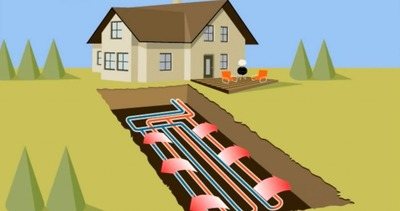

Such a system can be built with your own hands, for this reason they popular in Europe, as well as middle zone of Russia... But some believe that this is a fashion that will soon pass.
Such equipment difficult to heat large rooms, because the temperature of the soil in the places where the heat exchangers are located, as a rule, is 6-8 ° C.
But, especially expensive equipment designed for a production scale is capable of producing a lot of energy... Only devices of this type have huge cost.
Classic version
As noted, a wood-fired power plant uses several technologies to generate electricity. The classic among them is the energy of steam, or simply the steam engine.
Everything is simple here - wood or any other fuel, burning, heats up the water, as a result of which it turns into a gaseous state - steam.
The resulting steam is fed to the turbine of the generator set, and by rotating the generator generates electricity.
Since the steam engine and the generator set are connected in a single closed circuit, after passing through the turbine, the steam is cooled, again fed into the boiler, and the whole process is repeated.
Such a power plant layout is one of the simplest, but it has a number of significant drawbacks, one of which is explosion hazard.
After the transition of water to a gaseous state, the pressure in the circuit increases significantly, and if it is not regulated, then there is a high probability of pipeline rupture.
And although modern systems use a whole set of pressure control valves, the operation of a steam engine still requires constant monitoring.
In addition, ordinary water used in this engine can cause scale formation on the pipe walls, which lowers the efficiency of the station (scale impairs heat transfer and reduces the throughput of the pipes).
But now this problem is solved by using distilled water, liquids, purified impurities that precipitate, or special gases.
But on the other hand, this power plant can perform another function - to heat the room.
Everything is simple here - after fulfilling its function (rotation of the turbine), the steam must be cooled so that it again goes into a liquid state, which requires a cooling system or, simply, a radiator.
And if we place this radiator indoors, then in the end we will get not only electricity from such a station, but also heat.
How the collector works - it's simple
Any of the structures considered in the article for converting solar energy into thermal energy has two main components - a heat exchange and a light-collecting battery device. The second serves to trap the sun's rays, the first - to modify them into heat.
The most advanced collector is the vacuum one. In it, the accumulators-pipes are inserted into each other, and an airless space is formed between them. In fact, we are dealing with a classic thermos. The vacuum manifold, due to its design, provides perfect thermal insulation of the device. The pipes in it, by the way, have a cylindrical shape. Therefore, the rays of the Sun hit them perpendicularly, which guarantees the receipt of a large amount of energy by the collector.
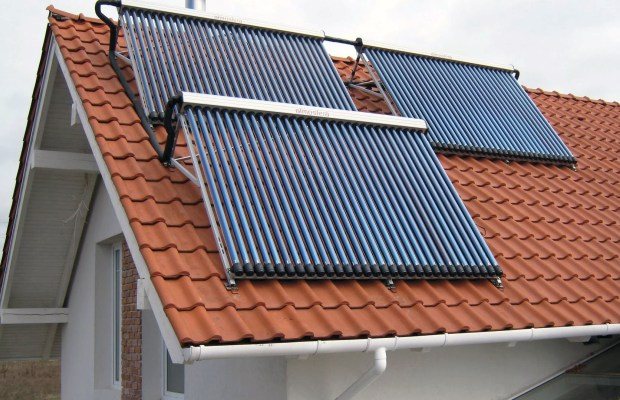

Progressive vacuum devices
There are also simpler devices - pipe and flat. The vacuum manifold outperforms them in all respects. Its only problem is the relatively high complexity of manufacturing. It is possible to assemble such a device at home, but it will take a lot of effort.
The heat carrier in the solar heating collectors in question is water, which costs little, unlike any modern types of fuel, and does not emit carbon dioxide into the environment. A device for capturing and transforming the rays of the Sun, which you can make yourself, with geometric parameters of 2x2 square meters, is capable of providing you with about 100 liters of warm water every day for 7-9 months. And large structures can be used for heating a house.
If you want to make a collector for year-round use, you will need to install additional heat exchangers on it, two circuits with an antifreeze agent and increase its surface. Such devices will provide you with warmth both in sunny and cloudy weather.
Thermoelectric generators
Power plants with generators built according to the Peltier principle are quite an interesting option.
Physicist Peltier discovered the effect that when electricity is passed through conductors consisting of two dissimilar materials, heat is absorbed on one of the contacts, and heat is released on the second.
Moreover, this effect is the opposite - if on one side the conductor is heated, and on the other - cooled, then electricity will be generated in it.
It is the opposite effect that is used in wood-fired power plants. When burned, they heat up one half of the plate (which is a thermoelectric generator), consisting of cubes made of different metals, and the second part of it is cooled (for which heat exchangers are used), as a result of which electricity appears on the plate terminals.
Gas generators
The second type is gas generators. Such a device can be used in several directions, including generating electricity.
It is worth noting here that such a generator itself has nothing to do with electricity, since its main task is to generate combustible gas.
The essence of the operation of such a device boils down to the fact that in the process of solid fuel oxidation (combustion), gases are emitted, including combustible gases - hydrogen, methane, CO, which can be used for a variety of purposes.
For example, such generators were previously used on cars, where conventional internal combustion engines worked perfectly on the emitted gas.
Due to the constant tremors of the fuel, some motorists and motorcyclists have already begun to install these devices on their cars.
That is, to get a power plant, it is enough to have a gas generator, an internal combustion engine and a conventional generator.
In the first element, gas will be released, which will become the fuel for the engine, and that, in turn, will rotate the rotor of the generator in order to obtain electricity at the output.
The advantages of gas-fired power plants include:
- Reliability of the design of the gas generator itself;
- The resulting gas can be used to operate an internal combustion engine (which will become a drive for an electric generator), a gas boiler, a furnace;
- Depending on the internal combustion engine and generator used, electricity can be obtained even for industrial purposes.
The main disadvantage of the gas generator is the cumbersome structure, since it must include a boiler, where all the processes for gas production, its cooling and purification system take place.
And if this device is to be used to generate electricity, then in addition the station should also include an internal combustion engine and an electric generator.
Free warmth against the energy crisis
In the XX century, electricity very much forced the horse and fire from the "energy" sector, but let's think - what is this electricity obtained from? It was originally produced by turbine generators driven by a steam engine that, in turn, consumed coal. Why did they start building hydroelectric power plants, then gas turbines, turbines operating on fuel oil, and wind turbines appeared. But both the wind and the movement of water are physical phenomena, and gas, coal and oil - as biological - are the "product" of solar activity. Nuclear energy is not directly related to the sun, but the nuclear power plant itself is the most complex and insanely expensive structure. In the era of quantum physics and semiconductors, solar cells appeared, but I want to warn you right away: do not buy into this thing. Yes, they can be used where there is nothing else, for example, on spaceships, but I do not advise you to fantasize about how you will glue the roof of your house with these blue plates and “just like that” you will receive energy forever. This is not a micro-calculator, this is a house or apartment, that is, kilowatts of power. Installing itself will never pay off. However, when we talk about the "energy" of the 19th century, we will keep in mind that it was wasted exclusively on movement and heat, that is, on heating the dwelling, now there are more areas of its consumption, but heating, that is, turning it into heat, is one of the the most expensive. See how many electric heaters are produced and sold! But to heat with "clean electricity", simply burning kilowatts in kilocalories - the height of waste. Heating with gas seems to be much more convenient, but gas is becoming more expensive all the time, gas networks are expensive to install and maintain, plus the draconian security measures imposed on the equipment. Coal seems to be a clear anachronism, but it is still being heated with it, especially in private houses in rural areas. And the "futurologists" predict what will happen when all this oil, gas and coal disappears. Certain signs also indicate that a landslide cooling may follow the current warming. What to do? In Russian, the words "hunger" and "cold" clearly come from some common "ancestor". For cold is automatically hunger, and hunger is guaranteed death.
1.
However, the energy, the lack of which we are told every day, lies literally under our feet. Let's take a look at the regular refrigerator that I hope everyone has. This is such a "box" from which heat is removed by a certain method, that is why it is cold inside there. But if something is cooling somewhere, then something must be heating.
| How the refrigerator works |
Put your hand behind the refrigerator and you will feel that the coil tube (condenser) is hot. That is, the heat from the back is the heat removed from the refrigerating chamber. Of course, this does not happen by itself.The second law of thermodynamics prohibits the spontaneous transfer of heat from a colder source to a warmer receiver. But if you expend energy, then such a transition is possible. The refrigerator is powered from the mains, more precisely, the compressor-pump is powered from the mains. When you look around your refrigerator, you can see that the tubes in the freezer (vaporizer) are much wider than the hot tubes in the back. It should be so. Refrigerant gas flies from a narrow tube into a wide one, pushing through the so-called. The “choke” (strong constriction) expands sharply, thus doing work. When doing work, it gives up energy, that is, it cools down, cooling the entire chamber. But in order to drive it from a wide tube into a narrow one, you need to do work on it, roughly speaking, to shove it into this tube. In order to drive gas, you need a compressor - it is he who rumbles in your refrigerator. By the way, if you have ever inflated a bicycle or auto tire with a hand pump, you should have noticed that the hose going from the pump to the spool becomes warm when inflated. The reason is the same. We push gas (air) from a larger volume into a smaller one. Thus, the refrigerator can be called "heat suction". Or "the reverse heat pump". It takes heat from a small, well-insulated chamber and throws it out. Note that the heat that the refrigerator emits goes nowhere, it just heats up our room. And if the refrigeration unit is powerful, for example, it cools a chamber the size of a gym, how much heat is generated there? And almost always it is thrown into "nowhere". At least with us.
2.
So, as we have seen, heat can be “pumped out” quite calmly. But in the same way it can be pumped up. Let's reformulate the problem a little. Let's say our house is some kind of insulated box. Well, that is, we took care and during the construction we made warm walls, installed normal windows, insulated the roof (which is very important - warm air rises to the top). You need to "pump" heat into this box. Or, to put it simply, heat it up. The question is - where to get it? Yes, from anywhere! In fact, from any environment whose temperature is greater than zero. Usually, as such a medium, soil heated by ... yes, by the sun is used! The heat capacity of the air is quite low, but the soil warmed up over the summer keeps heat quite well. In the February 20-degree frosts, you can dig the top layer and see that at a depth of 10-20 centimeters, the ground is not frozen, that is, the temperature there is clearly above zero. And at a depth of 2-3 meters? Such "waste" heat is called low-grade heat. It’s something that needs to be pumped into our house. In physics, this is called the "reverse thermodynamic cycle" by analogy with the forward Carnot cycle.
I first became interested in this issue when we built free artesian pump rooms - "points" where you can draw water from deep wells - 100-120 m. I remember there was a completely bitter frost, 25 degrees, I forgot my gloves and my hands were very cold. I turned on the tap and the water seemed hot to me! But her temperature was actually 13-14 degrees. 14 - (-25) - almost 40 degrees of contrast! Of course it will seem hot! Then I suddenly remembered how, it used to be, in winter we climbed into the catacombs and there, too, all year round - 13-14 degrees above zero. Only then did I think - what a grandiose and completely free warmth is buried under our feet! We literally walk on heat and at the same time pay huge money for heating and hot water. The only question is pumping this heat into our home.
3.
For such pumping, a heat pump is needed. In turn, heat from the soil can be obtained in two main ways. The first - from the surface layer - 1.20 m to 1.50 m, that is, taking away the heat that the sun gave.
Heat is removed from the soil by means of a plastic hose, which is laid along the perimeter of the plot at a depth of 1 m. It is desirable that the soil is moist (it is better for heat transfer).If the soil is dry, you will have to increase the length of the contour. The minimum distance between adjacent pipelines should be about 1 m. Ordinary water with special antifreeze is used as a heat carrier. To obtain 10 kW for heating (in our Central European conditions), 350-450 running meters of the pipeline will have to be laid. This will approximately take a plot of 20x20 meters.
| Heat pump that removes heat from the surface layer |
|
Benefits:
- relative cheapness
Disadvantages:
- very high requirements for the quality of styling.
- the need for a large area of "heat removal"
The second way is to take heat from the depths. This is where the bottomless barrel is! After all, if we compare our planet with an apple, then the hard earth's crust on which we walk will turn out to be even thinner than the skin of this apple. And then - hot lava, it is she who erupts in the form of volcanoes. It is clear that the heat from this giant stove rushes outside. Therefore, the second popular design of pumps is the use of geothermal heat, for which special heat sink probes are introduced to a depth of 150-170 m. Ground probes have become very widespread in recent years due to the simplicity of the arrangement and the insignificant need for technological area. Such probes usually consist of a bundle of four parallel plastic pipes, the ends of which are welded with special fittings so that they create two independent circuits. Also referred to as twin U-shaped probes, drilling operations take place in one day.
| Installation of a deep-well heat pump by the Germans from |
Depending on various factors, the well should be somewhere between 60-200 m in depth. Its width is 10-15 cm. The installation can be implemented on a small area of land. The volume of recovery work after drilling is insignificant, the impact of the well is minimal. The installation does not affect the groundwater level, since groundwater is not involved in the process. Due to the heat contained in the ground, the efficiency of such a pump is quite high. Approximate figures are such that spending 1 kW of electrical energy to move liquid into the ground and back, you get 4-6 kW of energy for heating. The level of investment is quite high in an installation based on the heat of the earth's interior, but in return you get safe operation, with the maximum long-term a service life of a system with a sufficiently high heat conversion coefficient.
| Heat pump with heat sinks |
|
| American video telling about the two main types of heat pumps |
Benefits:
- low area of "heat removal"
-reliability
-high efficiency
Disadvantages:- High price
Well, note that both types of pumps cannot be used in all regions. We will talk about this below. However, one should not think that heat can only be taken from the ground. You can safely take it from a reservoir - for example, from a lake or sea. Ground water can be used. Air can be used, but this option is suitable for countries with hotter climates. You can even use industrial heat, for example, heat obtained as a result of cooling at nuclear and thermal power plants, etc. In short, if there is some kind of "inexhaustible" and, most importantly, free source of low-grade heat, it can be used. Heat pumps can easily work in the "winter-summer" mode. That is, in the winter - a heater, in the summer - a refrigerator. In general, it makes absolutely no difference in which direction to pump the heat. So, by installing a winter-summer heat pump, the air conditioner is no longer needed.
| Heat pump "Winter-summer" |
4.
The construction of a heat pump is a demanding engineering task and many factors must be taken into account when designing it, such as soil properties and information about subsurface processes.
So, the advantages of heat pumps that we have:
- You pay not for heat, as in electric heaters, but only for pumping heat. For a kilowatt of pump operation, you get 4-5 kilowatts of heat. That is, the "efficiency" (although in fact the efficiency of the heat pump) is 300-400%.
- You will largely cease to be dependent on energy prices that are constantly rising. That is, to depend on the state.
- 100% environmentally friendly. Saving non-renewable energy resources and protecting the environment, including by reducing CO2 emissions into the atmosphere.
- In fact, 100% safe. No open flame, no exhaust, no carbon monoxide, no carbon dioxide, no soot, no diesel smell, no gas leakage, fuel oil spill. No fire hazardous storage facilities for coal, firewood, fuel oil or diesel fuel;
- Reliability. A minimum of moving parts with a long service life. Independence from the supply of fuel material and its quality. Virtually maintenance-free. The heat pump works silently and is compatible with any circulation heating system, and its modern design allows it to be installed in any room;
- versatility in relation to the type of energy used (electrical or thermal);
- a wide range of capacities (from fractions to tens of thousands of kilowatts).
- The heat pump can be made by hand, all components are on sale. Especially if there is low-temperature heat near the house.
- The heat pump is invisible and can be delivered without any permits.
- Wide range of applications. It is especially convenient for objects located far from communications - whether it is a farm, a cottage settlement or a gas station on the highway. In general, the heat pump is versatile and applicable both in civil, industrial and private construction.
5. IN USSR
The Soviet Union has always been proud of the "inexhaustibility" of its hydrocarbon energy resources, but, as you can see now, their reserves are really large, but they are quite exhaustible. The cheapness of these very carriers, in fact, their zero price, albeit artificially maintained, did not stimulate energy savings at all. Concrete houses and low-quality windows, which, from the standpoint of thermal insulation, were a solid sieve (I happened to see photos of new buildings in infrared rays - there the heat left both from the windows and from the inter-tile joints, well, the panels themselves were also not insulated by anything) forced to spend colossal resources for heating. Add to this the fact that heating in the USSR was central and from one third to half of the heat was lost during delivery. After the oil crisis of the early 70s, oil and gas became an important foreign exchange commodity and they began to "save" it, albeit in a very peculiar way - everything that could be converted to electricity, for which a grandiose nuclear power plant construction program was adopted. No one even stuttered about saving on such "small things" as apartments, public buildings, enterprises. As one absolutely typical Soviet engineer told me, "a big country should save big." What this "big economy" consisted of, I still did not understand. Moreover, this was said in a giant workshop, where there were windows in one (!) Glass. In order to maintain the temperature there in winter at least 13-14 degrees, the boiler house worked at full capacity. Another thing is that gas in the early 90s was very cheap, but as soon as the price slightly increased, it (the boiler room) was immediately closed (forever), and the heating system of the hard worker was cut and handed over for scrap.
| Pension "Druzhba" in Yalta. Heated and cooled by a water-to-air heat pump« |
Now Ukraine pays $ 500 for 1,000 cubic meters of gas. If you heat that shop using the same amount of gas, then, probably, for profitability, its products in terms of energy consumption should cost more than bricks made of gold. However, I passed by a couple of years ago, the area of the windows there was drastically reduced, laying their part with foam concrete, and the rest were replaced with metal-plastic.If they think of sheathing the walls with heat-insulating material, it will be generally excellent. Under the USSR, this was not done, there was no need for such expenses, because I repeat: gas did not cost anything at all, but it must be said that in isolated cases heat pumps were used even in the USSR. I don’t know which enthusiasts exactly “punched” their installation, but as usual, everything was limited to some “experimental samples”. The Druzhba boarding house in Yalta can be considered a masterpiece of Soviet architectural high-tech, which was heated in winter and cooled in summer using a heat pump that took energy from the depths of the Black Sea (where it is stable and almost never drops below 7 degrees). The pump, which, in addition to heating, heating water for domestic needs, heated the outdoor swimming pool and coped with its task even in the incredibly cold winter of 2005-2006. There were even experimental geothermal heat pump installations in private cottages. Of course, not just anywhere, but in the most developed part of the USSR - in the Baltic States.
6.
Abroad
The heat pump is not even new at all. For the first time, the already mentioned Carnot thought about this in 1824, when he was developing his ideal thermodynamic cycle. But the first real specimen was built by the Englishman William Thomson, Lord Kelvin, 28 years later. Its "heat multiplier" used air as a working medium (coolant), while it received heat from the outside air. The first trial model was launched in Switzerland and for more than a century this mountainous country has been a leader in the use of low-grade heat. Before World War II, the first large 175 kW plant was built here. The heat pump system used the heat of the river water and heated the Zurich Town Hall. Moreover, it worked in the "winter-summer" mode, in the winter it heated and in the summer it cooled the air inside the building. But still, until 1973, even in the West, the use of heat pumps was fragmented. It was only after the sharp rise in oil prices that they really paid attention to them. Seven years later, in 1980, there were three million heat pumps in operation in the United States. Until recently, the United States remained the leader in the number of systems released, now Japan is in first place. Now in the United States, about a million new installations are produced annually. In the same 1980, there were 150 thousand systems throughout Western Europe, then after another jump in gas prices in the early 2000s, in 2006 alone, over 450 thousand units were sold. Geothermal pumps account for a quarter of all pumps. Sweden, a cold northern country, has now become the undisputed leader in the number of heat pumps in Europe. For example, in 2006 alone, more than 120 thousand units were sold. The example is a 320 MW heat pump station in Stockholm. The source of heat is the water of the Baltic Sea with a temperature of + 4 ° C, cooling down to + 2 ° C. In summer, the temperature increases, and with it the efficiency of the station. France is known for the fact that up to 70% of all electricity there is produced at nuclear power plants and, perhaps, this country has the best energy system in Europe, at least if we take large countries. But the French have taken on heat pumps seriously - the transition to heat pump installations is also stimulated by the state. However, in other advanced countries it is also stimulated. Companies offering environmentally friendly installations enjoy tax incentives. Citizens purchasing systems - with a tax credit (up to 50%). As a result of such measures, sales jumped up: in 2006, 54 thousand heat pumps were sold, which brought France to second place in Europe after Sweden. Air conditioning systems based on heat pumps are also actively sold: from January to April 2007, the volume has doubled.During the year, 51 thousand units were sold per year. Germany is extremely poor in "classical" energy sources, which is why there are strict standards for the energy efficiency of buildings - "National standards for energy consumption" (if such standards were introduced in the USSR or the post-USSR, I'm not sure - would correspond to them at least 1% of structures). Strict requirements are driving the development of the heat pump market. In 2006, sales grew by 250%. By mid-2008, the total number of heat pumps in the country exceeded 300 thousand. Germany ranks fourth in Europe, slightly behind Finland. The UK is currently in the second phase. For these purposes, they subsidize the transition of residential and public buildings to heat pumps and encourage their use in new development projects.
In the Far East, Japan is not only one of the leaders in terms of the number of heat pumps produced and sold, but also a leader in improving technology. It is here that new refrigerants and state-of-the-art installations with the highest efficiency are developed. But China, which is rushing at full speed, is experiencing an acute shortage of energy resources. Therefore, the authorities of this communist country turned their attention to heat pumps. Soon there will be subsidies for building owners who switch to renewable energy sources, including geothermal heating. Despite the fact that the market is still developing, its volumes are impressive: about 15 million air conditioners based on heat pumps are sold in China every year. There is no doubt that the Chinese can produce everything they need in any quantity and at very reasonable prices.
7.
Russia and Ukraine
For some reason, the opinion is often expressed that heat pumps "will not work" in Russia because, firstly, there are cheap (compared to the West) energy carriers, in any case, not so expensive to install pumps in large quantities, and secondly, climatic features will make these very pumps ineffective or generally ineffective, such as in permafrost conditions. But this opinion is not entirely correct. Energy carriers are still cheap compared to Europe, but the owners of the so-called. "Russian gas" will strive to raise its prices on the domestic market to the world ones, it is not at all profitable for them to sell it cheaper. This is the economy. As for the "physics", then indeed, half of Russia is in permafrost, but there are 20 million living there, no more. The rest 120-125 are located in quite suitable places for VT installation. Why, say, in Finland they can be bet tens of thousands, but in Karelia or St. Petersburg it is "unprofitable"? As for the southern regions, there are no problems at all. Yes, if we take the heat output, then, probably, the average Russian heat pump will cost more than its counterpart in America or Japan, after all, the climate in Russia is, in general, colder. But on the other hand, TN in the Rostov region will probably still be more effective than the same in Finland. So it all comes down to government policy, nothing more.
| Typical Soviet panel house. Shooting in infrared rays. You can see how warmth hits literally everywhere. The contrast is insulated part of the house - there is practically no heat leakage, however even from this photo it is difficult to say how well the insulation is made. |
|
The situation in Ukraine is even more "fun". For 20 years, its authorities have been shouting about "energy independence" and about the "Russian gas stranglehold." But what did they offer in return? In their opinion, it is necessary to "diversify" the sources of energy purchases. Well, that is, to buy not only from Russia, but, for example, from Azerbaijan. However, Azerbaijan, of course, will not sell gas a penny cheaper than Russia, especially since Azerbaijan does not own this gas, everything is somehow tied to Western companies. So, from the change of the seller, absolutely nothing will change. The real way to reduce dependence is to reduce the consumption of hydrocarbon fuels.Nothing has been done here. Nothing at all. Ukraine consumes just an insane amount of gas, if you take its population and, in general, a rather weak economy. For example, it consumes more gas than France, while France is a much richer country. But if, instead of hysterical screams and paranoid fantasies about the "gas valve" which one day in a cold winter "would be blocked by an insidious Moskal", normal heat saving programs were introduced, and heat pumps would start to be installed wherever possible, then gas consumption, and hence dependence from suppliers could be cut in half. And if we take into account that Ukraine also produces gas, then in general it would be possible to reduce it to a minimum. But no one will tell you about this. Reducing gas consumption is not beneficial to the authorities, because the selling companies associated with it are making billions on intermediaries. Who would refuse such easy money? So the era of heat pumps will not be here, although they are still being installed fragmentarily. Amateur enthusiasts.
Prefabricated Power Plant Representatives
Note that these options - a thermoelectric generator and a gas generator are now priority ones, therefore, ready-made stations for use, both domestic and industrial, are being produced.
Below are a few of them:
- Indigirka stove;
- Tourist oven "BioLite CampStove";
- Power plant "BioKIBOR";
- Power plant "Eco" with a gas generator "Cube".
An ordinary household solid fuel stove (made according to the type of the "Burzhaika" stove), equipped with a Peltier thermoelectric generator.
Perfect for summer cottages and small houses, since it is compact enough and can be transported in a car.
The main energy during the combustion of firewood is used for heating, but at the same time, the existing generator also allows you to obtain electricity with a voltage of 12 V and a power of 60 W.
Oven "BioLite CampStove".
It also uses the Peltier principle, but it is even more compact (weight is only 1 kg), which allows you to take it on hiking trips, but the amount of energy generated by the generator is even less, but it will be enough to charge a flashlight or phone.
A thermoelectric generator is also used, but this is already an industrial version.
The manufacturer, on request, can manufacture a device that provides an output of electricity with a capacity of 5 kW to 1 MW. But this affects the size of the station, as well as the amount of fuel consumed.
For example, an installation that produces 100 kW consumes 200 kg of firewood per hour.
But the Eco power plant is a gas generator. Its design uses a gas generator "Cube", a gasoline internal combustion engine and an electric generator with a capacity of 15 kW.
In addition to industrial ready-made solutions, you can separately buy the same Peltier thermoelectric generators, but without a stove and use it with any heat source.
Homemade stations
Also, many craftsmen create self-made stations (usually based on a gas generator), which are then sold.
All this indicates that you can independently make a power plant from available tools and use it for your own purposes.
Next, let's look at how you can make the device yourself.
Based on thermoelectric generator.
The first option is a power plant based on a Peltier plate. Immediately, we note that a home-made device is suitable only for charging a phone, a flashlight or for lighting using LED lamps.
For manufacturing you will need:
- Metal body, which will play the role of a furnace;
- Peltier plate (sold separately);
- Voltage regulator with installed USB output;
- A heat exchanger or just a fan to provide cooling (you can take a computer cooler).
Making a power plant is very simple:
- We make a stove. We take a metal box (for example, a computer case), unfold it so that the oven does not have a bottom.We make holes in the walls below for air supply. At the top, you can install a grate on which you can place a kettle, etc.
- Mount the plate on the back wall;
- Mount the cooler on top of the plate;
- We connect a voltage regulator to the terminals from the plate, from which we power the cooler, and also draw conclusions for connecting consumers.
Everything works simply: we fire up the wood, as the plate heats up, electricity will be generated at its terminals, which will be supplied to the voltage regulator. The cooler will start and work from it, providing cooling of the plate.
It remains only to connect consumers and monitor the combustion process in the stove (throw up firewood in a timely manner).
Based on a gas generator.
The second way to make a power plant is to make a gasifier. Such a device is much more difficult to manufacture, but the output of electricity is much higher.
To make it you will need:
- Cylindrical container (for example, a disassembled gas cylinder). It will play the role of a stove, therefore, hatches should be provided for loading fuel and cleaning solid combustion products, as well as an air supply (a forced fan will be required to ensure a better combustion process) and a gas outlet;
- Cooling radiator (can be made in the form of a coil), in which the gas will be cooled;
- Capacity for creating a filter of the "Cyclone" type;
- Capacity for creating a fine gas filter;
- Gasoline generator set (but you can just take any gasoline engine, as well as a regular 220 V asynchronous electric motor).
Pros and cons of a wood-fired power plant
A wood-fired power plant is:
- Fuel availability;
- The ability to get electricity anywhere;
- The parameters of the electricity received are very different;
- You can make the device yourself.
- Among the shortcomings, it is noted:
- Not always high efficiency;
- The bulkiness of the structure;
- In some cases, generating electricity is just a side effect;
- To generate electricity for industrial use, a large amount of fuel must be burned.
In general, the manufacture and use of solid fuel power plants is an option that deserves attention, and it can become not only an alternative to power grids, but also help in places remote from civilization.
Briefly about the principle of action
So that in the future you understand why certain parts are needed when assembling a homemade thermoelectric generator, first let's talk about the device of the Peltier element and how it works. This module consists of thermocouples connected in series between ceramic plates, as shown in the picture below.
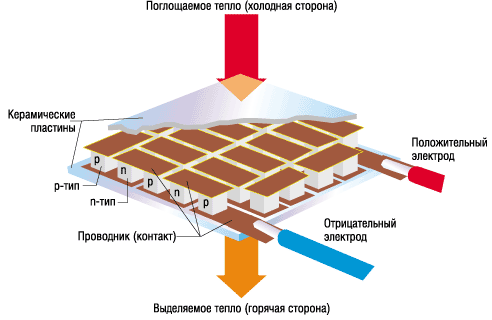

When an electric current passes through such a circuit, the so-called Peltier effect occurs - one side of the module heats up, and the other cools down. Why do we need it? Everything is very simple, if you act in the reverse order: heat one side of the plate, and cool the other, respectively, you can generate electricity of low voltage and current. We hope that at this stage everything is clear, so we turn to master classes that will clearly show what and how to make a thermoelectric generator with our own hands.
Free electricity: ways to get it yourself. Schemes, instructions, photos and videos
After that, cover the cracks with strips of cotton fabric, the width of each strip is cm. This way you will not let the heat escape from the house. It is advisable to have thick, massive doors in the house that will keep you a lot of heat. You can also upholster an old front door with leatherette filled with a foam pad. It is advisable to plaster all cracks with polyurethane foam.
If you decide to install a new door, then see if you can keep the old one, since the two entrance doors create an air gap between them, and it insulates the heat.Attach a sheet of foil behind the radiator and it will reflect heat back into the room, with little heat escaping through the wall. It should be noted that the gap between the foil and the battery must be at least 3 cm.
If for one reason or another it is not possible to attach a metal foil screen, try insulating the house from the outside.

